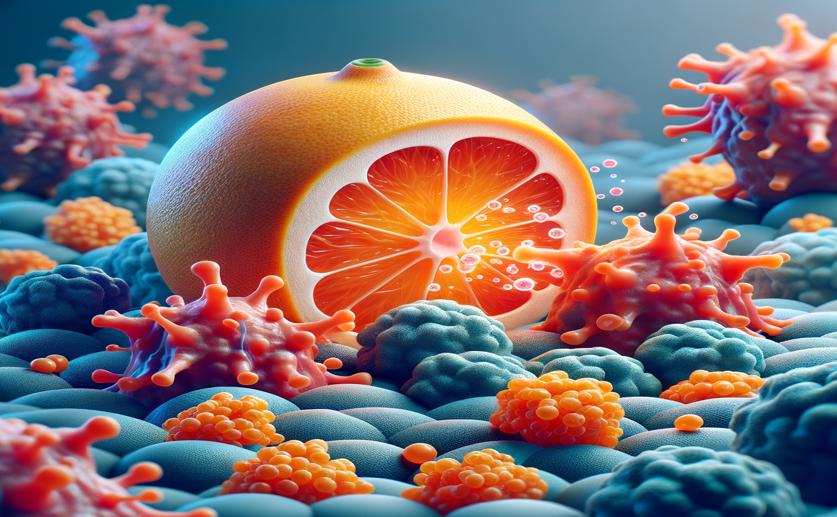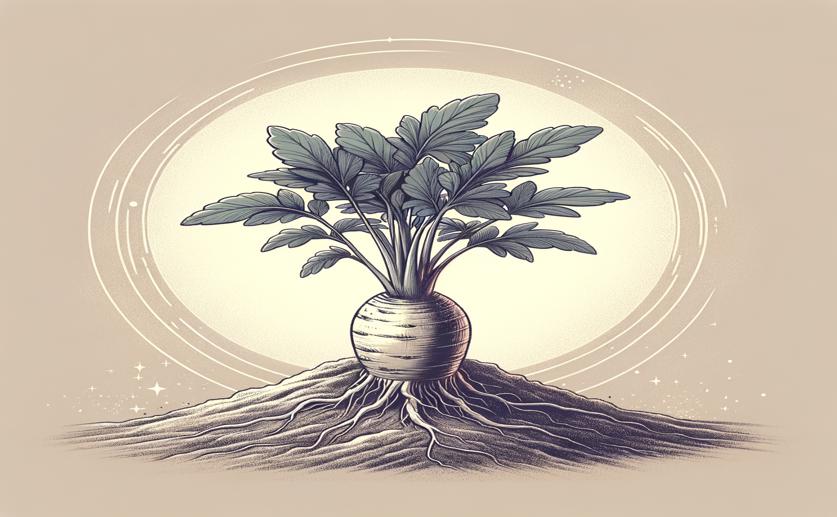
Biochem News
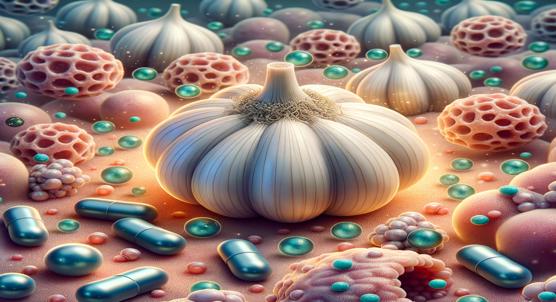
 26th July, 2024
| Jenn Hoskins
26th July, 2024
| Jenn Hoskins
Garlic Nanoparticles Boost Cancer Immunotherapy by Activating Gut Immune Cells
A study from Soochow University reveals garlic-derived nanoparticles can boost γδ T cells, enhancing their cancer-fighting abilities and improving the effectiveness of existing immunotherapies. This innovative approach could revolutionize cancer treatment.

 26th July, 2024
| Greg Howard
26th July, 2024
| Greg Howard
A Versatile Enzyme Prefers Converting Ginsenoside Rb3 to Rd over Other Types
Changchun University researchers have developed an enzyme, Pxbgl, to enhance ginseng's health benefits by converting complex ginsenosides into more absorbable forms. This breakthrough could improve therapeutic efficacy and lower production costs.
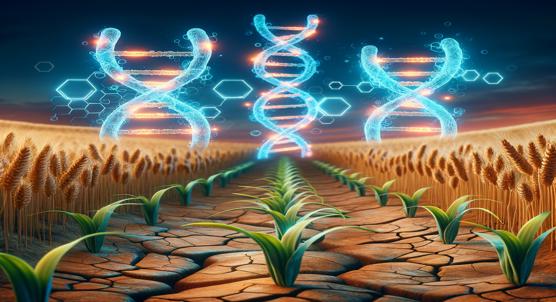
 26th July, 2024
| Jim Crocker
26th July, 2024
| Jim Crocker
Key Genes Working Together to Help Wheat Plants Survive Drought
Researchers at Hebei Academy found that NF-Y transcription factors help plants cope with drought by regulating genes for water retention and root development. This discovery could lead to more drought-resistant crops, aiding sustainable agriculture amidst climate change.

 26th July, 2024
| Jenn Hoskins
26th July, 2024
| Jenn Hoskins
Boosting Garden Cress Growth with Humic Acids Controlled by Phenolic Radicals
A study by the University of Basilicata reveals that both natural and synthetic humic acids boost garden cress growth, with natural sources offering diverse benefits like enhanced root development and stress resilience, while synthetic types allow for targeted applications.

 26th July, 2024
| Jim Crocker
26th July, 2024
| Jim Crocker
Unlocking the Biotech Potential of Key Bacteria through Genomic Analysis
A study by the University of the Witwatersrand reveals Parageobacillus's potential in biofuel production, identifying genes for carbohydrate degradation and high-temperature resilience. This genus, similar to Geobacillus, could be pivotal for industrial applications.

 26th July, 2024
| Jenn Hoskins
26th July, 2024
| Jenn Hoskins
How Seed Treatment with Plant Hormones Helps Corn Grow in Salty Soil
Seed priming with indole-3-acetic acid (IAA) enhances maize seedling resilience under salt stress by boosting germination, sugar content, and antioxidant activity. This technique offers a promising solution to improve crop yields in challenging conditions.

 26th July, 2024
| Jim Crocker
26th July, 2024
| Jim Crocker
Understanding Drought Resistance in Wild Eggplants Through Leaf Light Response
ICAR's study uses chlorophyll fluorescence imaging to explore drought tolerance in eggplants and their wild relatives. This noninvasive method helps identify resilient traits, aiding breeding programs to develop more drought-resistant varieties in response to climate change.
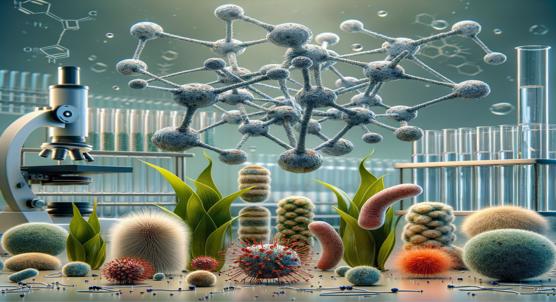
 26th July, 2024
| Jim Crocker
26th July, 2024
| Jim Crocker
Phospholipid Profiling of Plant Pathogens Using Advanced Separation Techniques
Researchers at the University of Münster have developed a novel method to analyze lipids in plant-pathogenic bacteria, offering detailed insights into their cell membranes. This breakthrough could lead to targeted treatments, enhancing agricultural productivity.

 25th July, 2024
| Jenn Hoskins
25th July, 2024
| Jenn Hoskins
Dataset for Detecting Small Onions and Flowering Plants
A new dataset from Universidad EAFIT offers high-res aerial images to detect green onion and foliage flower crops, enhancing precision agriculture. This tech-driven approach aims to support small farmers, improve crop monitoring, and boost food security.

 25th July, 2024
| Jim Crocker
25th July, 2024
| Jim Crocker
How Hatching and Body Weight Affect Growth, Gut Health, and Microbes in Chickens
Early feeding in on-farm hatched chicks fosters better gut microbiota, leading to improved growth and uniformity in broiler flocks. Optimizing hatching practices can enhance production efficiency and reduce metabolic diseases, addressing key poultry industry challenges.
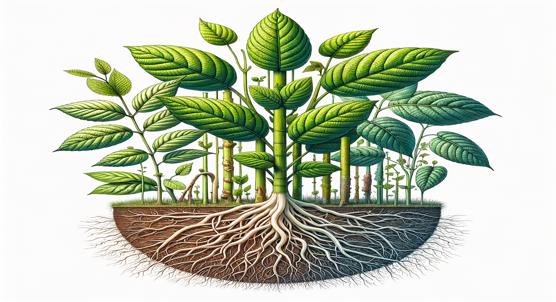
 25th July, 2024
| Jim Crocker
25th July, 2024
| Jim Crocker
Most Plant Mutations Are Specific to Certain Layers
Researchers at LMU Munich have uncovered how mutations in plant meristems—regions with stem cells—spread and lead to observable changes. Their study highlights the genetic and epigenetic mechanisms behind somaclonal variation, enhancing our understanding of plant development.
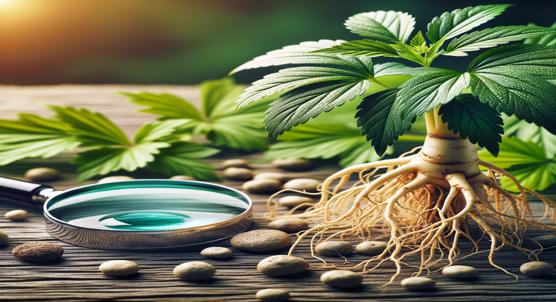
 25th July, 2024
| Jenn Hoskins
25th July, 2024
| Jenn Hoskins
Natural Compounds in Ginseng Studied for Early Huntington's Disease Prevention
Recent research suggests Panax ginseng compounds like schizandrin and protopanaxadiol may help treat early Huntington's disease by interacting with dopamine receptors, potentially offering new therapeutic avenues. Further studies are needed to confirm these promising findings.
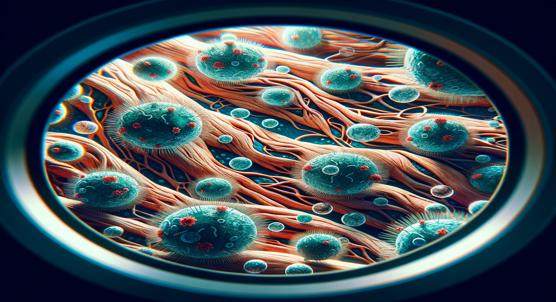
 25th July, 2024
| Greg Howard
25th July, 2024
| Greg Howard
Genome Sequencing of Tree Disease Pathogen Reveals Adaptations to Colonize Bark
Researchers sequenced the genome of Pseudocryphonectria elaeocarpicola, a fungus threatening Elaeocarpus plants in China. The findings reveal genes linked to plant infection and resistance, offering insights for developing targeted disease management and breeding strategies.

 25th July, 2024
| Jenn Hoskins
25th July, 2024
| Jenn Hoskins
Heart Rate Slows During Egg Incubation, Study Shows
Researchers developed a non-invasive device to monitor blue petrels' heart rates during egg incubation, revealing significant physiological adaptations to prolonged fasting. This innovative method offers valuable insights into seabird energy management without disturbing them.

 25th July, 2024
| Jenn Hoskins
25th July, 2024
| Jenn Hoskins
Early Insights on How Fish Immune Systems Fight Viral Infections
Researchers at Hunan Agricultural University discovered that the molecule BF/C2 plays a crucial role in grass carp's immune response to Grass Carp Reovirus (GCRV). Their findings highlight potential targets for developing treatments to combat this deadly virus in aquaculture.

 24th July, 2024
| Greg Howard
24th July, 2024
| Greg Howard
Growing Beautiful Orchids: Best Practices for Soil, Light, and Sealing Methods
Orchids face a decline due to over-collection and habitat loss. A study on Cattleya walkeriana shows that using banana pulp in culture mediums, higher light levels, and specific sealing systems can boost growth and survival, offering a practical solution for orchid conservation.
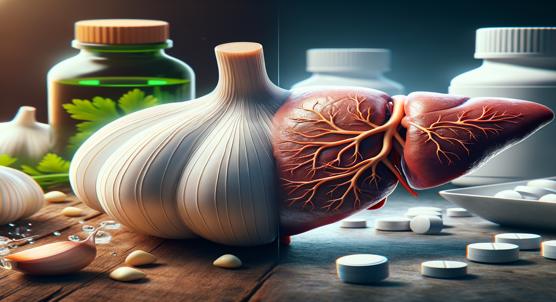
 24th July, 2024
| Jim Crocker
24th July, 2024
| Jim Crocker
How Garlic Could Help Treat Alcohol-Related Liver Disease: A Comprehensive Study
Recent research from Shanxi Medical University reveals garlic's potential in combating alcoholic liver disease (ALD). By targeting inflammation and promoting alcohol metabolism, garlic's active compounds could offer a natural, effective treatment for ALD.

 24th July, 2024
| Jenn Hoskins
24th July, 2024
| Jenn Hoskins
Health Benefits and Key Compounds in Ashwagandha Plant Extracts
A study on ashwagandha reveals its potential to treat neurological and gastrointestinal disorders due to its significant enzyme inhibition and spasmolytic activities. However, high toxicity levels suggest further research is needed to isolate safe, effective compounds.

 24th July, 2024
| Jenn Hoskins
24th July, 2024
| Jenn Hoskins
Key Receptors Work Together to Boost Tomato Plant Defenses
Recent research reveals that the peptide hormone systemin activates tomato plant defenses by binding to the SYR1 receptor, which then pairs with SERK proteins. This interaction triggers a chain of phosphorylation events, enhancing the plant's resistance to pests and pathogens.

 24th July, 2024
| Jim Crocker
24th July, 2024
| Jim Crocker
Melatonin Extends Okra Freshness by Slowing Softening and Reducing Weight Loss
Researchers found that melatonin can extend the shelf life of okra by maintaining firmness and reducing weight loss. It works by modulating genes related to cell wall integrity and promoting stomatal closure, offering a novel solution to postharvest spoilage.

 24th July, 2024
| Greg Howard
24th July, 2024
| Greg Howard
Using Pulsed Light to Keep White Button Mushrooms Fresh and Free from Germs
Pulsed light treatment significantly extends the shelf life of whole white button mushrooms by inactivating harmful microbes and preserving nutritional quality. This method offers a promising alternative to traditional food processing, maintaining freshness and safety.
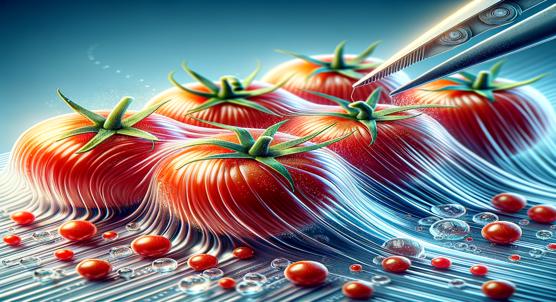
 24th July, 2024
| Jim Crocker
24th July, 2024
| Jim Crocker
New Chitosan-Onion Films Help Keep Cherry Tomatoes Fresh Longer
Researchers at Shenyang Medical College developed chitosan-onion polysaccharide films to preserve fruits and vegetables. These films enhance antimicrobial and antioxidant properties, effectively delaying spoilage in cherry tomatoes, though mechanical issues remain.

 24th July, 2024
| Jenn Hoskins
24th July, 2024
| Jenn Hoskins
Understanding How Melons Absorb and Manage Phosphate Under Stress Conditions
Shanghai Jiao Tong University's research on PHT1 Pi transporters in melon reveals how certain genes help plants cope with phosphorus deficiency. These insights could lead to more efficient crops and sustainable farming, reducing reliance on polluting fertilizers.

 24th July, 2024
| Greg Howard
24th July, 2024
| Greg Howard
Boosting Apple Water Efficiency and Strength by Regulating Key Plant Enzyme
Researchers at Northwest A&F University found that overexpressing the FERONIA receptor kinase gene in apple trees enhances water use efficiency and drought resilience. This discovery could lead to more robust apple crops under climate stress.
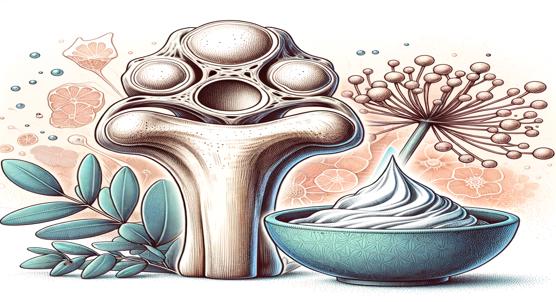
 23rd July, 2024
| Jim Crocker
23rd July, 2024
| Jim Crocker
Healing Cartilage with Boswellia Extract in Special Gels to Reduce Inflammation
A new study introduces a composite hydrogel with Boswellia serrata extract to treat osteoarthritis. This innovative material reduces inflammation and promotes cartilage repair, offering a dual approach to managing OA symptoms and improving joint health.
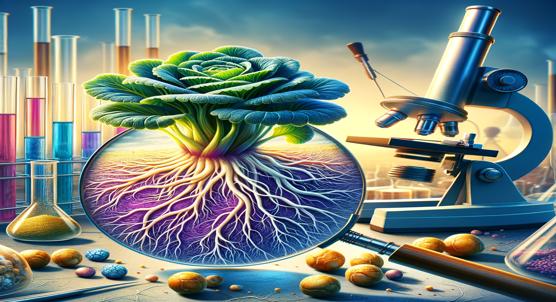
 23rd July, 2024
| Jenn Hoskins
23rd July, 2024
| Jenn Hoskins
Nano-silicon and Sodium Reduce Damage from Low Potassium in Chicory
Researchers found that adding nano-silicon and sodium to potassium-deficient chicory boosts potassium accumulation and use efficiency, improving plant health. However, sodium in potassium-sufficient conditions can harm chicory's physiological aspects.
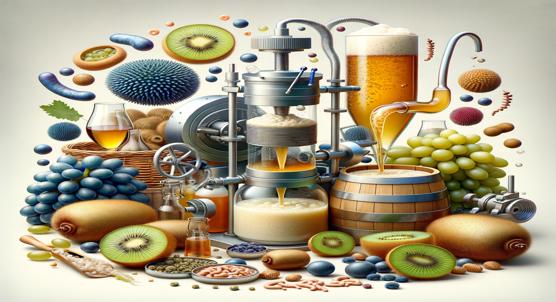
 23rd July, 2024
| Greg Howard
23rd July, 2024
| Greg Howard
Using Yeast and Bacteria Together to Make Aromatic Kiwifruit Wine
Recent research from Northwest A & F University shows that using specific lactic acid bacteria and non-Saccharomyces yeast strains in kiwifruit wine fermentation enhances its flavor and aroma, leading to higher quality and more appealing wines.

 23rd July, 2024
| Jim Crocker
23rd July, 2024
| Jim Crocker
Basil Plants Boost Tomato Healing Through Scent Signals in Mixed Gardens
Recent research from Kagoshima University reveals that basil can boost tomato plant defenses by releasing volatile compounds. These compounds enhance wound response and resistance to pests, offering a sustainable alternative to chemical pesticides in agriculture.

 23rd July, 2024
| Jim Crocker
23rd July, 2024
| Jim Crocker
Using Tropical Fruit Waste to Boost Probiotic Health and Functionality
Probiotics face stress during processing and digestion, affecting their effectiveness. A study found that acerola, cashew, and guava fruit coproducts enhance probiotic growth, viability, and nutritional value, suggesting a dual benefit for health and sustainability.

 23rd July, 2024
| Jenn Hoskins
23rd July, 2024
| Jenn Hoskins
How Environment and Plants Affect Chemical Changes in Lake Sediments
Researchers from Ben-Gurion University revealed that different aquatic plants decompose at varying rates, significantly impacting oxygen levels in water. This study underscores the need to consider plant-specific traits when managing aquatic ecosystems to preserve water quality.
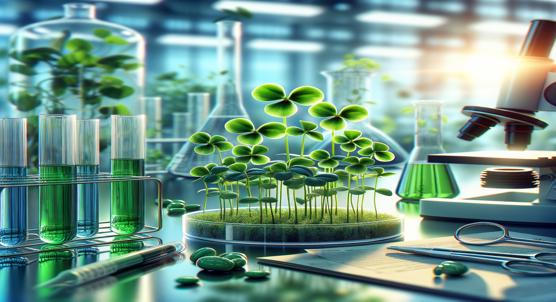
 23rd July, 2024
| Jim Crocker
23rd July, 2024
| Jim Crocker
Boosting Vincristine Levels in Lab-Grown Madagascar Periwinkle Cultures
Researchers at MGSM's Dadasaheb Dr. Suresh G. Patil College have developed a method to boost vincristine production in Madagascar periwinkle using triploid endosperm tissue and optimized culture conditions. This approach could enhance the yield of this vital anti-cancer compound.
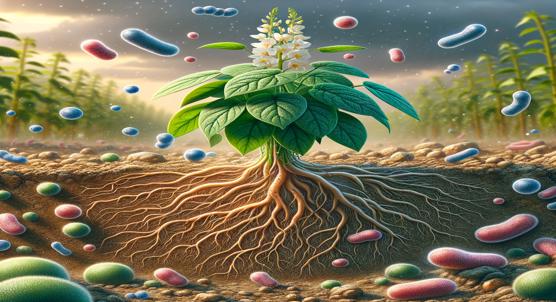
 23rd July, 2024
| Jim Crocker
23rd July, 2024
| Jim Crocker
How Beneficial Microbes Help Lentil Plants Thrive in Polluted Soil
Research from Aligarh Muslim University shows that symbiotic microbes like Rhizobium bacteria and mycorrhizal fungi can significantly boost lentil growth and reduce heavy metal uptake in fly ash-amended soils, offering a promising strategy for enhancing food security.
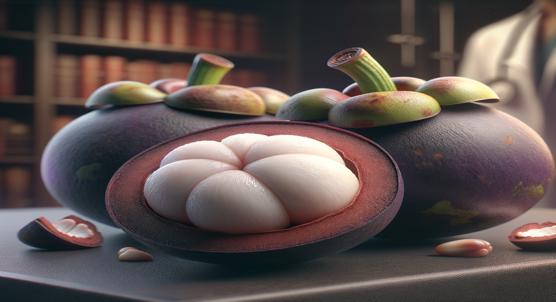
 22nd July, 2024
| Jenn Hoskins
22nd July, 2024
| Jenn Hoskins
Key Findings on Alpha Mangostin Breakdown from Mangosteen Studies
Alpha-mangostin (AM) from Garcinia mangostana shows potent antibacterial activity, but degrades under acidic conditions, losing efficacy. Prenyl groups at C2 and C8 are crucial. Advanced extraction techniques can help preserve its therapeutic potential.
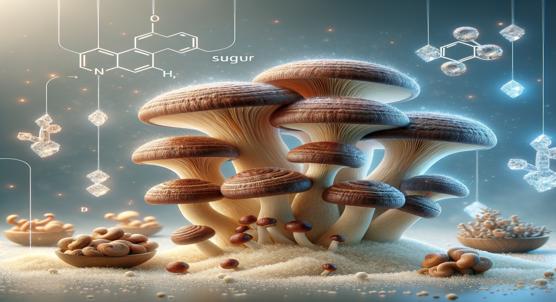
 22nd July, 2024
| Greg Howard
22nd July, 2024
| Greg Howard
How a Key Enzyme Influences Growth and Sugar Production in Reishi Mushrooms
A Jiangnan University study reveals that overexpressing the glagt gene in Ganoderma lucidum suppresses fungal growth but boosts polysaccharide production. This dual role offers new insights into enhancing bioactive compound yields for medicinal use.

 22nd July, 2024
| Jenn Hoskins
22nd July, 2024
| Jenn Hoskins
Comparing a Single Dose of Two Boswellia Supplements in Healthy Volunteers
A study from Ulm University found that micellar Boswellia serrata extracts greatly boost bioavailability but don't improve anti-inflammatory effects compared to native extracts. This highlights the complexity of Boswellia's therapeutic properties beyond just absorption rates.

 22nd July, 2024
| Greg Howard
22nd July, 2024
| Greg Howard
Creating Eco-Friendly Food Packaging from Fish Processing By-Products
Researchers at the Federal University of Paraíba have developed biodegradable films from fish by-products that improve food packaging. These films enhance barrier, thermal, and antioxidant properties, offering a sustainable and effective solution for protecting food.

 22nd July, 2024
| Jenn Hoskins
22nd July, 2024
| Jenn Hoskins
Xanthohumol from Hops Fights Gout-Related Bone Damage in Arthritis
Researchers have found that Xanthohumol, a compound from hops, shows promise in treating gouty arthritis and bone damage. It reduces inflammation and promotes bone health, offering a potential new treatment for gout, especially for patients with other chronic conditions.
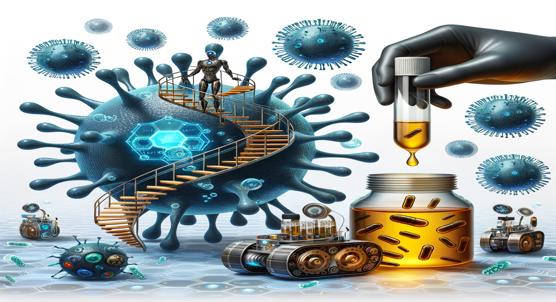
 21st July, 2024
| Greg Howard
21st July, 2024
| Greg Howard
Black Seed Oil Nano-Delivery Systems for Fighting Staph Infections
Researchers at Guilan University found that Nigella Sativa oil encapsulated in chitosan nanoparticles significantly enhances its antibacterial effects against drug-resistant Staphylococcus aureus, offering a promising alternative to traditional antibiotics.
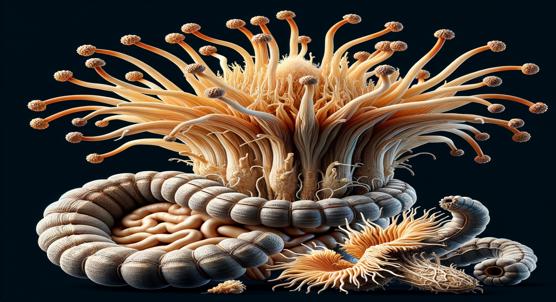
 21st July, 2024
| Jim Crocker
21st July, 2024
| Jim Crocker
Understanding a Unique Enzyme from Cordyceps for Healthier Fat Processing
Researchers at Seoul National University have discovered a new lipase, CACML7, from Cordyceps militaris. This enzyme is highly selective for the sn-2 position on lipid molecules and prefers cis-fatty acids, making it valuable for industrial lipid modification.
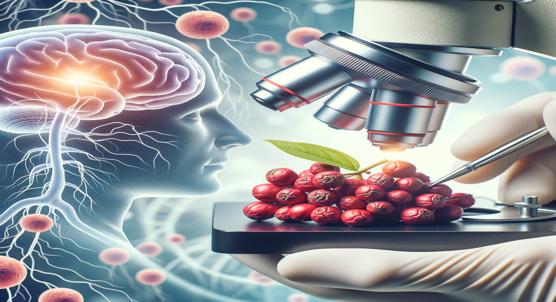
 21st July, 2024
| Greg Howard
21st July, 2024
| Greg Howard
How Schisandra Berry Helps Treat Depression and Nerve Pain: A Scientific Study
Recent research highlights Schisandra chinensis as a promising treatment for neuropathic pain and depression. By targeting key molecular pathways, this traditional Chinese medicine could offer dual benefits, alleviating both conditions with fewer side effects.
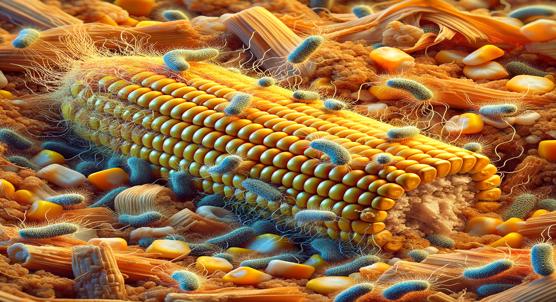
 21st July, 2024
| Jenn Hoskins
21st July, 2024
| Jenn Hoskins
Unlocking How Corn Waste Helps Microbes Produce Fats and Process Sugar
The study reveals Ustilago maydis can efficiently produce microbial oil using agricultural waste like corn stover. This fungus metabolizes various sugars, including galactose, enhancing sustainable oil production and reducing waste, promising eco-friendly industrial applications.

 21st July, 2024
| Jenn Hoskins
21st July, 2024
| Jenn Hoskins
Nutrient Competition in Apple Blossoms Prevents Fire Blight Infection
A study reveals how Pantoea agglomerans outcompetes the fire blight pathogen Erwinia amylovora for arabinogalactan in apple flowers, suppressing its virulence. This microbial competition offers new strategies for disease control, reducing reliance on chemical treatments.
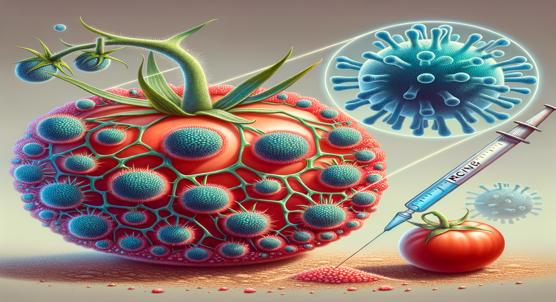
 21st July, 2024
| Jenn Hoskins
21st July, 2024
| Jenn Hoskins
Enzyme Pic14 Weakens Tomato Immune Response by Blocking Key Protein Activation
Recent research from Tel-Aviv University reveals that the Pic14 gene in tomatoes negatively regulates immune responses by dephosphorylating Mkk2, thus balancing defense mechanisms and preventing excessive cell death, offering insights for developing disease-resistant crops.

 21st July, 2024
| Jim Crocker
21st July, 2024
| Jim Crocker
How Apple Resists Alkaline Conditions Through Key Proteins and GABA Synthesis
Scientists at Northwest A&F University discovered that γ-aminobutyric acid (GABA) helps plants resist alkaline stress. Key players include MdNAC104, which lowers GABA levels, and MdSINA2, which boosts them. This breakthrough could lead to crops better suited for alkaline soils.
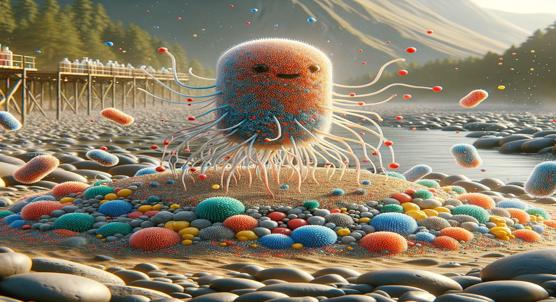
 21st July, 2024
| Jenn Hoskins
21st July, 2024
| Jenn Hoskins
Friendly Microbes Break Down Chemicals in Riverbed Gravel and Sand
Researchers at Queen Mary University of London discovered that dimethylsulfide (DMS) is a key driver of methane production in river sediments, revealing the significant role of specific methanogens. This insight could refine global methane budgets and inform climate models.
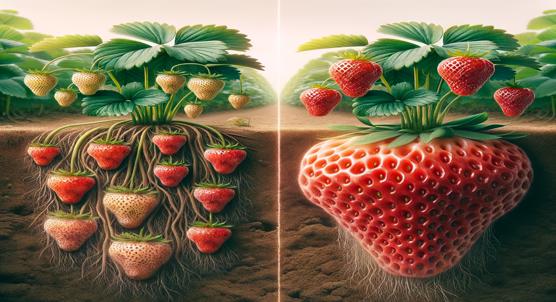
 21st July, 2024
| Greg Howard
21st July, 2024
| Greg Howard
How Calcium and Nitrogen Affect Strawberry Size and Firmness
Researchers at the Leibniz Institute found that strawberry bruising and decay can be reduced by analyzing cell size distribution and nutrient treatments. This study enhances fruit tissue compression models, aiding in better agricultural practices and reducing food waste.
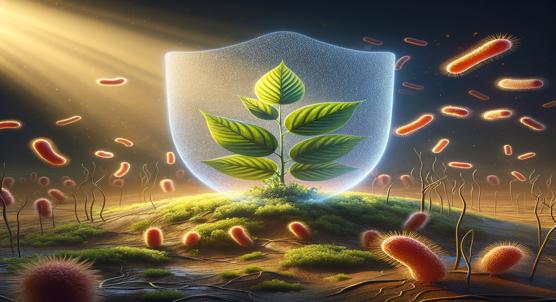
 20th July, 2024
| Greg Howard
20th July, 2024
| Greg Howard
Understanding How Fire Blight Resistance Proteins Work to Protect Plants
Researchers at Seoul National University have identified a protein in wild apple species that helps resist the devastating fire blight disease. This discovery could lead to new, genetically resistant apple varieties, enhancing agricultural productivity.
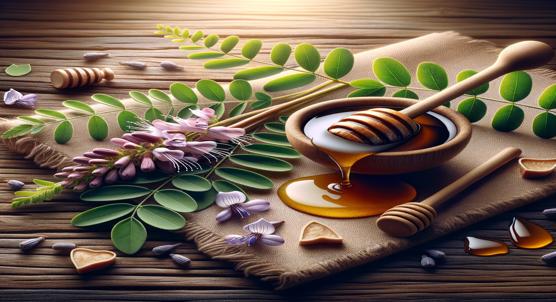
 20th July, 2024
| Greg Howard
20th July, 2024
| Greg Howard
How Licorice and Honey Help Improve Chronic Fatigue Syndrome
Ningxia Medical University's study reveals that honey processing enhances licorice's immune-boosting properties, validating traditional Chinese medicine. Honey-fried licorice improves key immune indicators and shows superior efficacy in treating chronic fatigue syndrome.
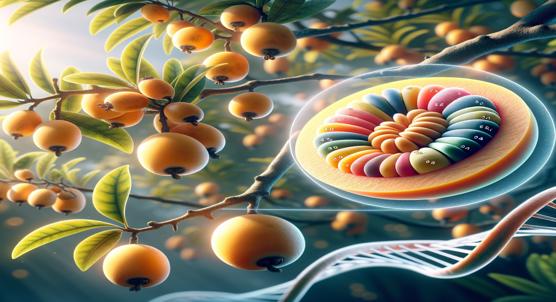
 20th July, 2024
| Jenn Hoskins
20th July, 2024
| Jenn Hoskins
Discovering Key Genes in Loquat and Their Role in Producing Plant Pigments
Researchers at Southwest University identified EjMYB5, a key transcription factor regulating proanthocyanidin accumulation in loquat. Overexpressing EjMYB5 in tomatoes and tobacco altered flavonoid levels, offering insights for improving fruit quality and health benefits.
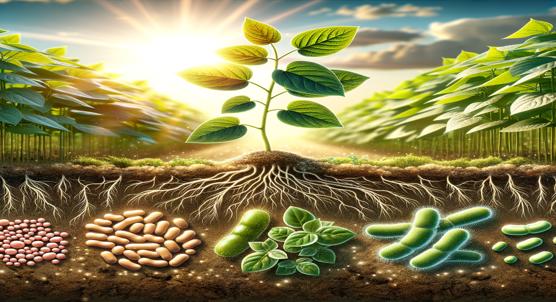
 20th July, 2024
| Greg Howard
20th July, 2024
| Greg Howard
Bacterial Communities Drive Soil Health, Plant Growth, and Soybean Yield
São Paulo State University’s study reveals that using specific bacterial consortia in soybean cultivation can boost soil fertility, plant health, and crop productivity. This microbial approach reduces the need for fertilizers and pesticides, promoting sustainable agriculture.
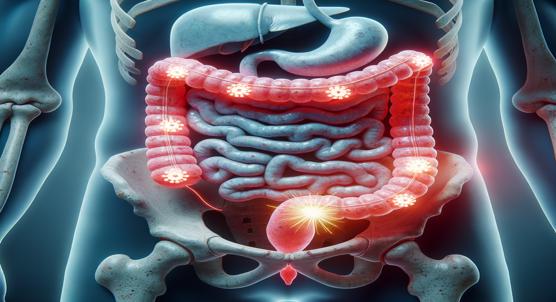
 20th July, 2024
| Jim Crocker
20th July, 2024
| Jim Crocker
Healing and Gut Health Benefits of Ubiquinol in Radiation-Damaged Intestines
Ubiquinol, a potent antioxidant, shows promise in protecting against radiation-induced intestinal damage and restoring gut microbiota balance, according to a study by Cairo University. This could improve the quality of life for cancer patients undergoing radiotherapy.
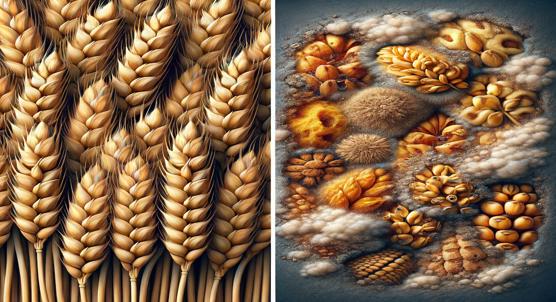
 20th July, 2024
| Jenn Hoskins
20th July, 2024
| Jenn Hoskins
How Storage Conditions Affect Toxin Levels in Wheat
A study by Cranfield University reveals how storage conditions like moisture and temperature affect mycotoxin levels in wheat. Findings show significant variations in toxin concentrations, emphasizing the need for rigorous monitoring to ensure food safety.
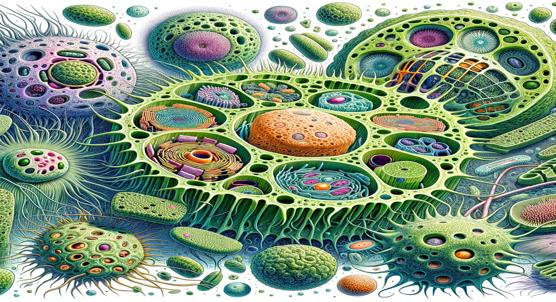
 20th July, 2024
| Jenn Hoskins
20th July, 2024
| Jenn Hoskins
Plant-Based Cell Systems for Quick and Easy Experimentation
Climate change threatens global agriculture, but new chloroplast-based gene expression systems from the Max-Planck Institute offer hope. These systems enable rapid genetic prototyping across various plants, potentially leading to more resilient and productive crops.

 20th July, 2024
| Jenn Hoskins
20th July, 2024
| Jenn Hoskins
How Long Non-Coding RNAs Help Rapeseed Seedlings Cope with Drought Stress
A groundbreaking study reveals how long non-coding RNAs (lncRNAs) help rapeseed adapt to drought and rehydration. Key plant hormones like ABA and auxin play crucial roles, offering new insights for developing drought-resistant crops.

 20th July, 2024
| Jenn Hoskins
20th July, 2024
| Jenn Hoskins
How Cherry Blossoms React to Increased Ozone: Health and Emissions
Elevated ozone levels initially stimulate Prunus × yedoensis seedlings but ultimately harm their physiology, reducing photosynthesis, pigment content, and cell integrity. This study underscores the need to manage ozone pollution in urban areas to protect plant health.
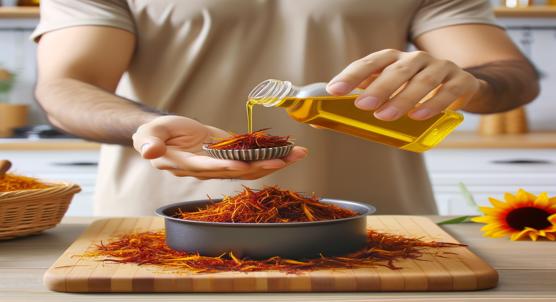
 19th July, 2024
| Jenn Hoskins
19th July, 2024
| Jenn Hoskins
Better Extraction of Healthy Compounds from Saffron Waste Using Sunflower Oil
Researchers developed an eco-friendly method using ultrasound and sunflower oil to extract phenolic compounds from saffron waste. This sustainable technique enhances antioxidant activity, offering potential applications in food, aquaculture, and cosmetics.

 19th July, 2024
| Greg Howard
19th July, 2024
| Greg Howard
Understanding Leaf Shape and Gene Activity in Unique Soybean Varieties
A study by South China Agricultural University reveals that modifying soybean leaf traits, such as shape and size, can enhance crop yields. By analyzing a mutant with rolled and narrow leaves, researchers identified key genetic and hormonal factors that could boost productivity.

 19th July, 2024
| Jenn Hoskins
19th July, 2024
| Jenn Hoskins
How Oregano Oil Fights Harmful Bacteria and Their Toxins
Oregano essential oil (OEO) shows promise in combating Listeria monocytogenes by reducing biofilm formation and hemolytic activity. The study highlights OEO's potential as a natural antimicrobial agent in food processing, offering an alternative to traditional disinfectants.
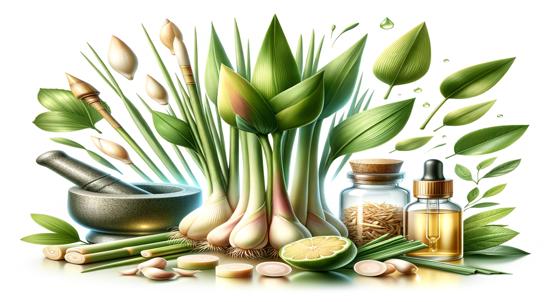
 19th July, 2024
| Greg Howard
19th July, 2024
| Greg Howard
Health Benefits of Extracts from Different Parts of Three Types of Lemongrass
Recent research on Indonesian lemongrass species reveals potent antimicrobial and antioxidant properties, highlighting their potential as safe, effective treatments for antimicrobial resistance. Key compounds and extracts show promise, paving the way for novel therapeutic agents.
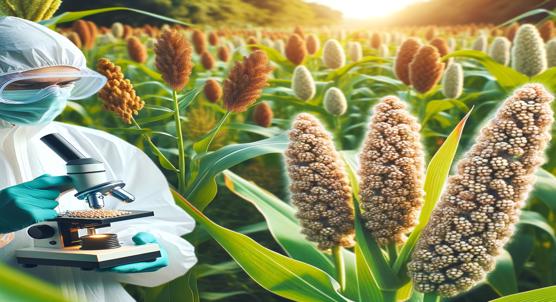
 19th July, 2024
| Jenn Hoskins
19th July, 2024
| Jenn Hoskins
Exploring Sorghum and Foxtail Millet Compounds for Cancer-Fighting Potential
Recent research reveals that phytochemicals in Sorghum and Foxtail millet grains can inhibit cancer cell growth by binding effectively to the DHFR enzyme, showing potential as dietary interventions for breast and prostate cancer, comparable to standard drugs.
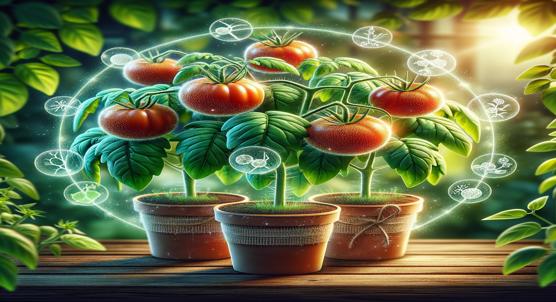
 19th July, 2024
| Greg Howard
19th July, 2024
| Greg Howard
How Azelaic Acid Helps Tomatoes Resist Fungal Infections
Researchers in Iran found that treating tomato plants with azelaic acid boosts their defense against early blight. The treatment enhances key enzymes and modulates defense pathways, reducing oxidative stress and improving resistance, potentially leading to more resilient crops.
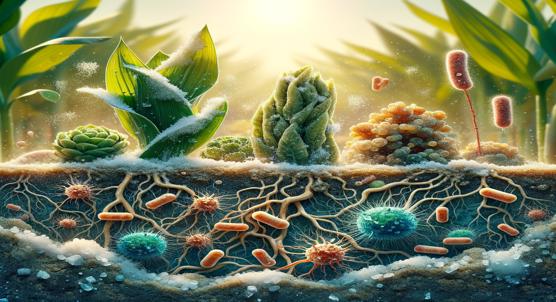
 19th July, 2024
| Jim Crocker
19th July, 2024
| Jim Crocker
How Salty Soil Affects Bacteria in Plants and Crops
A study from Humboldt University reveals specific bacteria help salt-tolerant plants, or halophytes, survive in high-salinity soils. Identifying these bacterial markers could enhance crop resilience amidst rising soil salinity due to climate change and human activities.

 19th July, 2024
| Jim Crocker
19th July, 2024
| Jim Crocker
Complete Genome Sequences of Two Viruses Found in Echinacea Seeds
Researchers in Korea discovered two new viruses in echinacea seeds, expanding the Tombusviridae family. These viruses, closely related to oat chlorotic stunt virus, highlight the complex evolution and diversity of plant viruses, emphasizing the need for ongoing surveillance.
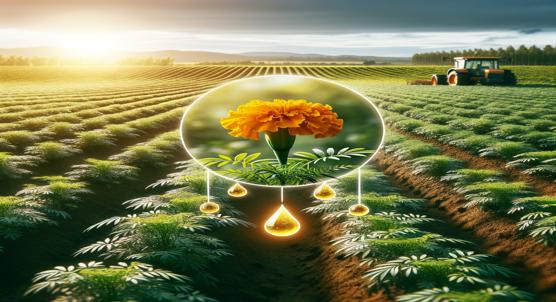
 19th July, 2024
| Jenn Hoskins
19th July, 2024
| Jenn Hoskins
Biopesticide Impact on Crops Using Extracts from Marigold Plants
Marigold extracts show promise as eco-friendly pesticides, effectively killing major crop pests in a study by PES University. These plant-based solutions could reduce reliance on harmful chemicals, supporting sustainable agriculture.

 19th July, 2024
| Jim Crocker
19th July, 2024
| Jim Crocker
Schisandrin B Restores Immune Balance in Brain Cells Using miR-124
Schisandrin B from Schisandra chinensis shows promise in reducing neuroinflammation by shifting microglia from a pro-inflammatory to an anti-inflammatory state via miR-124, potentially offering new treatments for neuropsychiatric and neurodegenerative disorders.
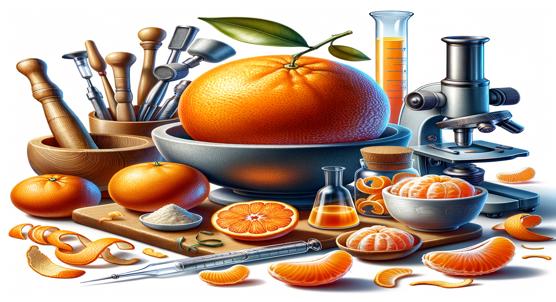
 19th July, 2024
| Greg Howard
19th July, 2024
| Greg Howard
Comparing Methods for Extracting Healthy Compounds from Mandarin Peels
Research reveals that bioactive compounds from citrus waste, like quercetin and hesperidin, have potent anti-cancer properties. Using ultrasound-assisted extraction, these compounds can be efficiently harvested, promoting both health benefits and environmental sustainability.

